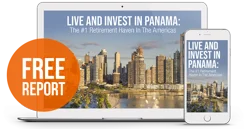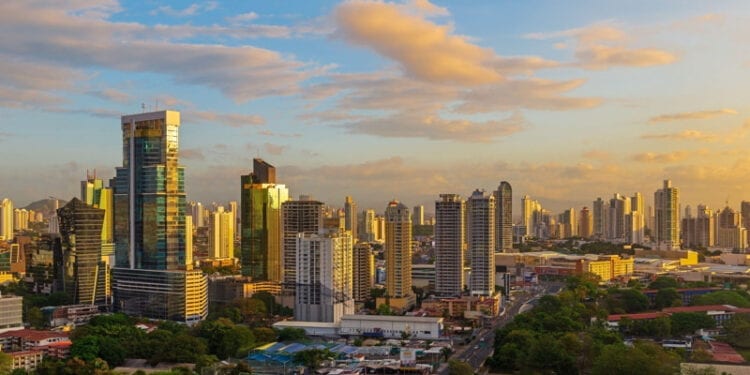If you’ve been paying attention, you’ve heard me say it often…
If you’re interested in taking an action offshore, do it when you’re able to… while you’re eligible for whatever opportunity you’re considering.
Because you never know when that opportunity will no longer be available to you—either because requirements change and you no longer qualify or because the opportunity is eliminated altogether.
Top of this list would be residency and citizenship programs.
They can and do change often and sometimes quickly.
That’s the situation right now with Panama’s well-known Friendly Nations visa.
Panama’s Friendly Nations Visa
The Friendly Nations program was implemented by presidential decree in 2012.
The idea was to make Panama more accessible for citizens of the eventual 50 nations on the eligibility list.
The positive impact on the Panamanian economy was significant.
You could qualify for the Friendly Nations program in one of three ways.
You needed a job offer from a local company… to set up a corporation… or to purchase a piece of property of any value.
The job offer option came with a work permit… albeit through a painful chicken-and-egg process. The residency permit had to be acquired first, which took three to six months or longer.
Still, this new path to a work permit for a non-national meant that every company in Panama could hire more foreign workers more easily.
This led to existing businesses expanding… many new businesses, including big-deal international companies, setting up shop… and a tidal wave of young people from around the world making their way to the isthmus looking for opportunity and filling jobs that couldn’t readily be filled by locals.
The Friendly Nations program, through its two other qualifying options, also provided a welcome alternative for people who didn’t want to work but who didn’t qualify—because either they weren’t yet receiving Social Security or their monthly Social Security payment wasn’t big enough—for the pensionado residency permit.
Whichever option you used to qualify for a Friendly Nations residency permit, the biggest benefit was that it came with permanent status from the first approval.
Before the Friendly Nations program, the pensionado permit was the only residency option in Panama that provided permanent residency out of the gate. You got a temporary residency card while your file was being reviewed. Then, when it was approved, you were a permanent resident immediately.
All other residency options in Panama came with a temporary residency period.
That means you have to renew your residency at least once and generally more than once before you’re eligible for permanent residency. And each renewal comes at the cost of additional government and attorney fees.
The Changes To The Friendly Nations Visa
Last Thursday, the Panama government released details of a new presidential decree that changes the Friendly Nations residency program in big-deal ways.
To start, a Friendly Nations visa will now be a temporary permit for the first two years… after which you can apply for permanent residency if you still qualify for the program.
The revised qualification options still include an offer of employment and owning real estate, but the corporation option has been eliminated.
Frankly, the corporation option amounted to a loophole. It was originally intended to encourage people to start businesses, but it didn’t play out that way. No one I know who went this route actually went into business. Everyone simply opened what I came to call a burner corporation. They’d pay to establish the entity, get residency, then let the corporation die on the vine.
While the new decree is still fresh off the presses, it seems that the catch-22 with the work option may have been resolved.
Historically, you needed a work letter in hand when you submitted your Friendly Nations application paperwork. You presented it to immigration along with your other required documentation. Once you were granted residency, then you could apply for the work permit. As a practical matter, that meant not being able to start your new job for up to a year from the start of the process.
Now, it seems you apply for the work permit first. Not that the process overall will be quicker, but this adjustment eliminates the awkwardness of someone being resident in the country and probably working already before his work permit has been approved.
One of the most important changes has to do with the real estate purchase path. Now you must spend at least US$200,000. That’s a reasonable amount compared with similar Golden Visa-style programs in other countries, but those other programs grant permanent residency immediately.
Digital Nomads And The Changes To Panama’s Residency Programs
My biggest concern when learning about the changes to this program was to do with this country’s growing digital nomad community. Panama was ahead of the curve with this demographic and has been attracting young people who are working from home and can work from anywhere for many years. With its jurisdictional taxation regime, central location, and good infrastructure and amenities, it’s a very attractive and competitive digital nomad destination.
I wrote to my contact with immigration to say I thought it was a mistake to make it more difficult for that population to come and hang out in Panama indefinitely.
“Au contraire,” he replied…
Then he went on to tell me about another executive order issued the same day the changes to the Friendly Nations program were put in place.
This one inaugurates a short-term remote worker visa option.
This new remote worker visa allows for stays of nine months and can be renewed for an additional nine months. The digital nomad can work for a recognized international corporation or for their own corporation but can’t do work for any Panama corporation. They also have to prove at least US$36,000 a year in income.
The program is open to citizens of countries beyond the 50 Friendly Nations.
The issue here is that it can take up to six months for immigration to process an actual residency permit. They’ll need to fast track these remote worker visas, or the situation will become chaos for the applicants.
Panama’s Investment Visa Program
In October 2020, Panama established a residency program that is more in line with a traditional Golden Visa program. That program has a real estate investment threshold of US$300,000 for the first two years… until October 2022. After that, the minimum investment amount jumps to US$500,000.
Like most Golden Visa programs, the investment has to be made directly. You can’t include mortgage funds to meet the minimum threshold.
And, also as with other Golden Visa programs, Panama offers other investment options to qualify. You can invest US$500,000 in stocks on the Panama stock exchange or US$750,000 in a certificate of deposit in a Panamanian bank.
Panama’s Golden Visa program provides permanent residency once approved. In that sense, this residency option fills a gap left by the changes in the Friendly Nations visa… so Panama still has two residency options offering permanent residency immediately upon approval.
In addition, Panama also continues to make available a long list of other residency options with different investment requirements from a reforestation residency permit that requires an US$80,000 investment… to a general investor visa that requires just US$300,000 investment in a bank CD, real estate, or any combination. However, both of those are temporary and require several renewals before you reach permanent residency status.
In other words, they come with greater administrative hassle and expense.
Lief Simon
Editor, Offshore Living Letter










